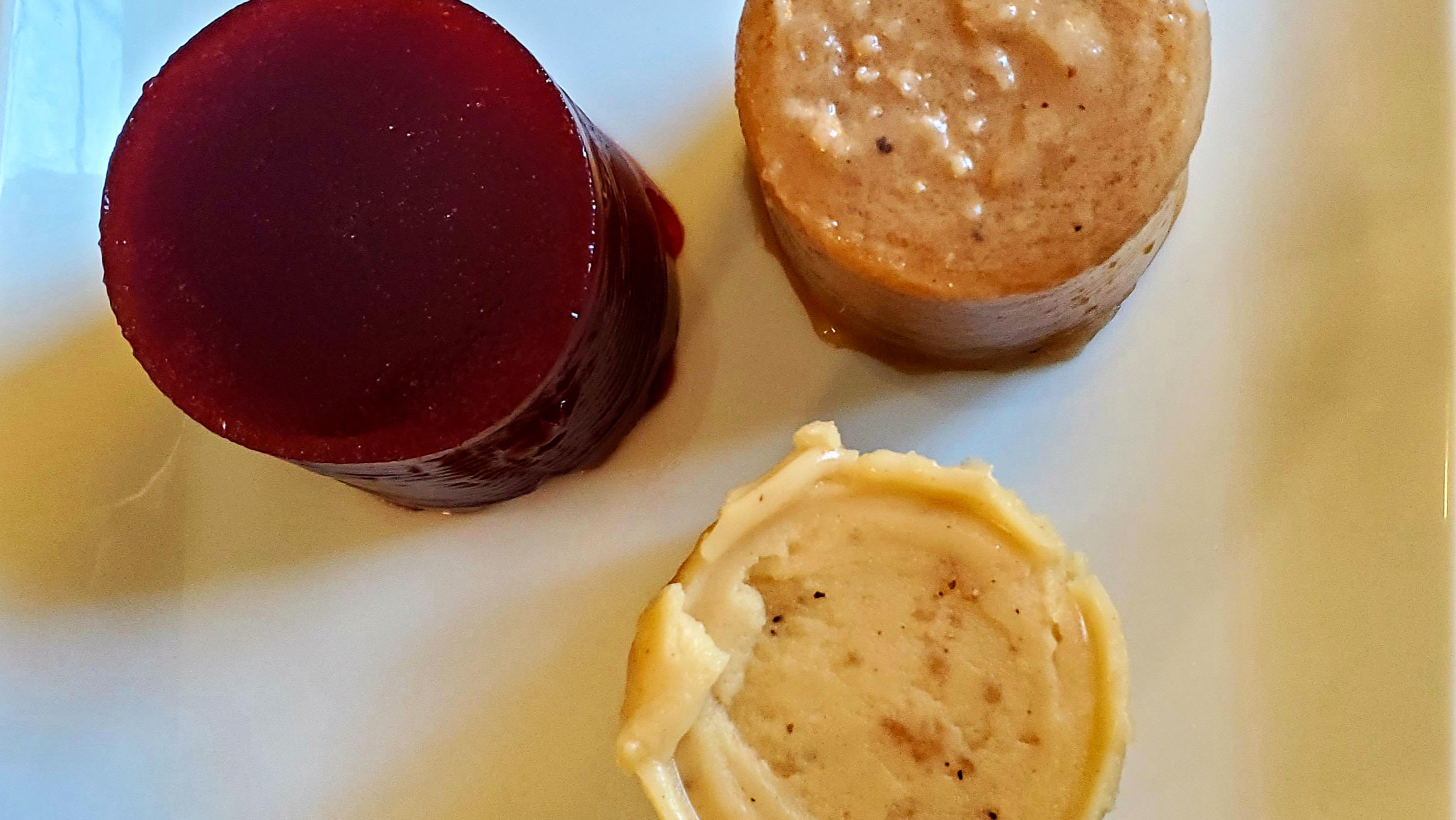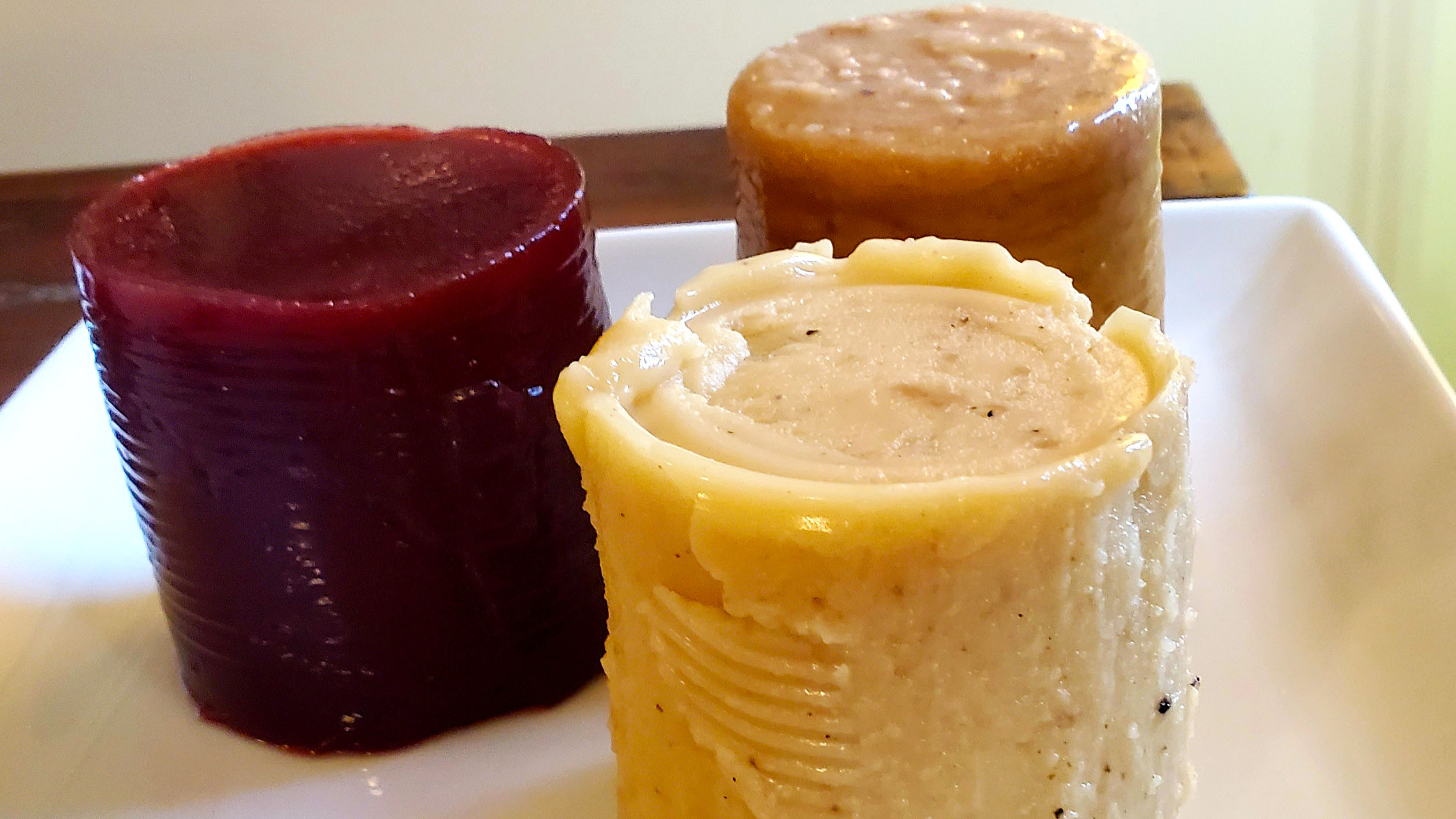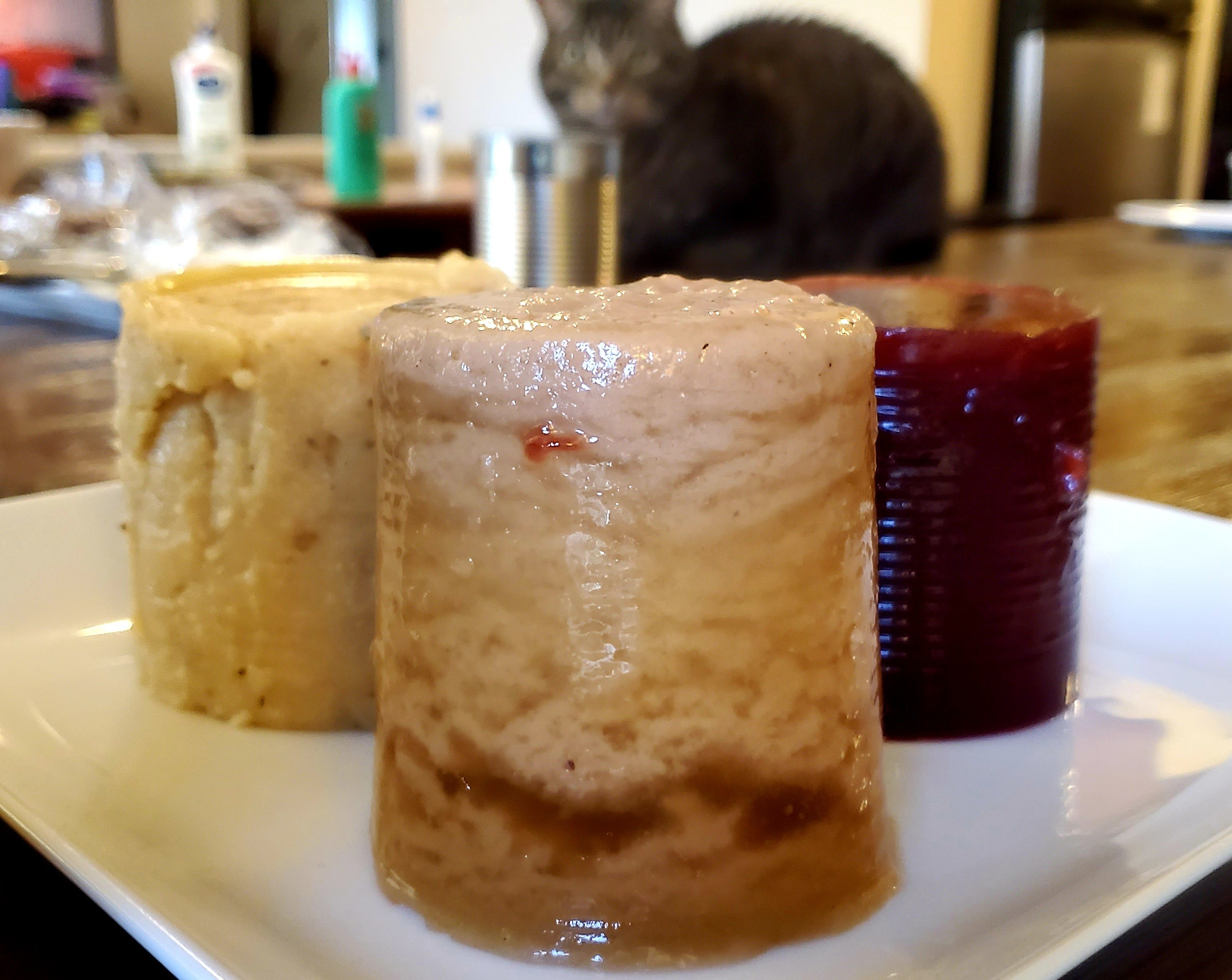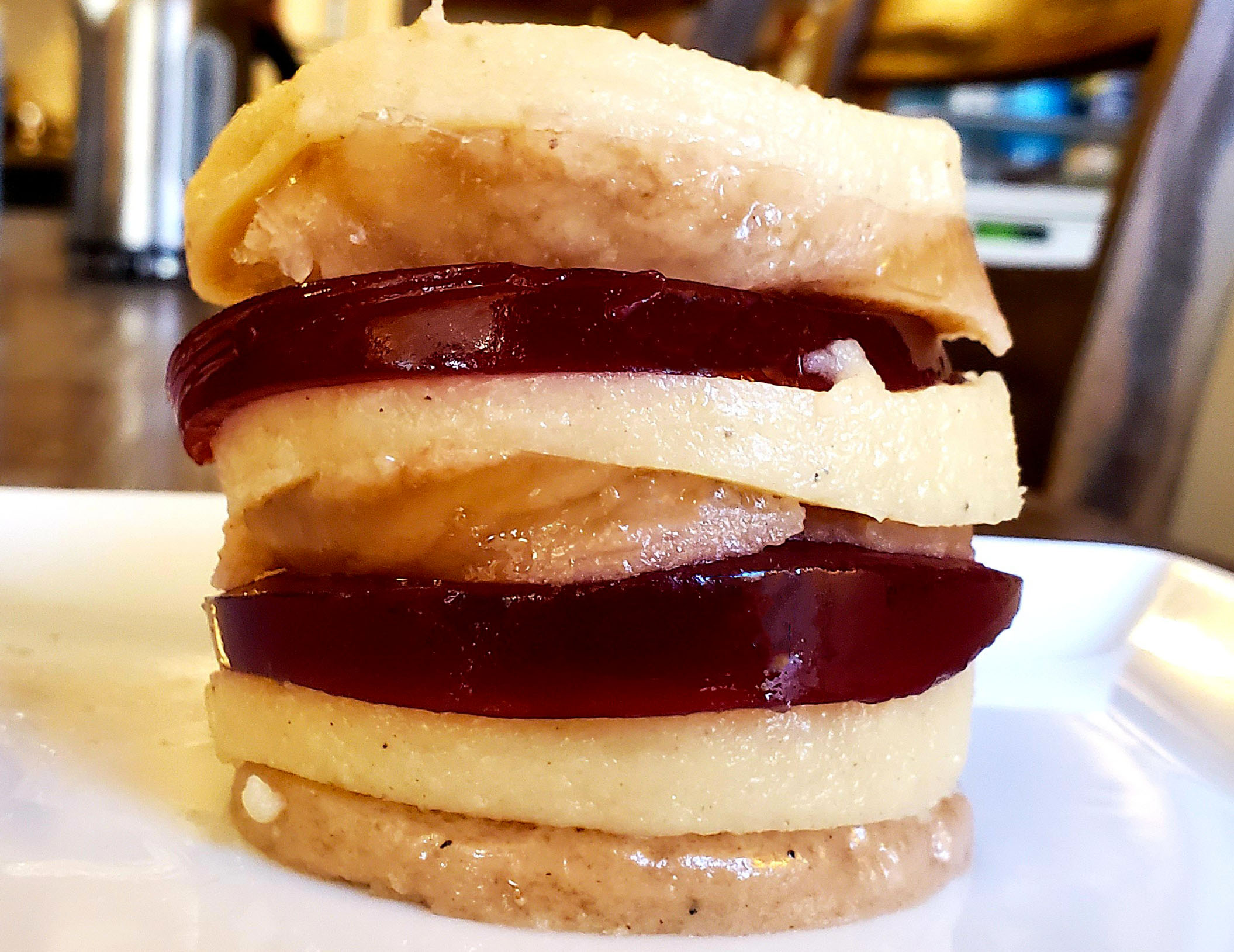Is Jell-O Gravy The Next Big Thing? Let's Find Out
Welcome to Jiggle All The Way, The Takeout's holiday celebration of Jell-O, gelatin, and all things wiggly. We'll be releasing new feature stories and original holiday recipes every day this week, and each of them will have a little bit of wobble.
Ah, the humble cranberry sauce—the only staple of holiday meals that tastes even better straight out of the can. None of that "whole berry" stuff, either; in our household, it needs to take the form of a solid beet-red mass studded with the ridges of the aluminum can from whence it came. It's just about the best holiday condiment you could imagine. Besides gravy.
So... what if the gravy took the sturdy shape of a can, too? What if cranberry sauce weren't the only jiggly, can-shaped flavor booster on the Christmas table? Due to no small amount of quarantine mania, in the spirit of holiday experimentation and the gelatinous spirit of Jiggle All The Way, I set about determining whether gravy could schlomp out of a can with the same consistency as cranberry sauce, concentrating its function without sacrificing its flavor.
Experiment #1: Pectin
I wanted to try multiple methods of jellification, just to see what might work best. Thus, I turned to pectin, that magical polysaccharide that makes cranberry sauce (and any given jam or jelly) do its particular thing. Cranberries generate their own pectin in cranberry sauce, but I'd have to try introducing some to my gravy of choice. I grabbed a jar Ball RealFruit Low or No-Sugar-Needed Pectin, since I wanted to use as little sugar as possible—we're going for savory, after all.
For the sake of differentiation (and because I still had some homemade stock cubes in the freezer), I chose to make a chicken gravy with the pectin. The gravy was simple enough: melt 2 Tbsp of butter in a medium saucepan, then add equal parts flour and cook down for a couple of minutes to form a solid roux. From there, pour in about 1½-2 cups of stock, a bit at a time, whisking as you go to avoid lumps. Stop when you have a gravy that coats the back of a spoon and holds its shape (cook it down if you need it a bit thicker). I also seasoned with salt and pepper as I went, and added a sprig or two of thyme from my herb garden.
But how much pectin to add? There aren't any instructions on the jar for how to make gravy jelly. At my best guess, I halved the recommended amount for two jars of jam, putting 21 grams of pectin in my gravy. The results were a bit on the sweet side (pectin still has that quality), but a good pinch of salt helped to balance that out.
Experiment #2: Gelatin
Of course, we had to try Jell-O as well, but without clear instructions, I was going with my gut on this one. This time, I went with beef stock; I had some bullion cubes that would go to waste otherwise, and it'd help me tell the two gravy experiments apart.
I repeated the same method with the beef gravy as I did with the chicken, roux and all. But this time, I added two and a half .25-oz. packets (around .63 oz) of Knox Gelatine packets to around half a cup of the stock, to let it bloom before adding to the simmering gravy.
(Word to the wise: don't do what I did the first time and just add the gelatin to the hot stock, unless you want to fish out snot-like clumps of gelatin from your saucepan.)
Assembly
Once both my gravys (gravies?) were ready, I took two empty, cleaned cranberry sauce cans and poured each gravy into one of the can. Sealing it with plastic wrap at the top, I let them cool in the fridge for the following day.
Results
Overturning the gravy from the cans to a plate turned out to be a pain; some expert knife work and a lot of shaking might be necessary, just like with regular cranberry sauce. (Run some hot water along the outside of the tin if you're really having trouble.) And voila! It's... alive?
Okay, so the results don't look the most appetizing. It is brown sauce congealed by dark science into a can-shaped monstrosity, after all. But the chicken gravy actually held its shape and consistency pretty well, and both gravy jellies held firm. The pectin was still a tiny bit sweet, so it didn't end up tasting exactly like chicken gravy. But the look was there.
The beef stock with gelatin is another story. As you can see, the mixture separated pretty thoroughly in the cooling process, as the buttery roux ended up rippled amongst clear, beefy Jell-O. (To combat this, I'd probably try stirring it every few minutes in the early stages to keep the whole thing combined as the gelatin sets.) But I will say, the taste test won out: it tasted like beef gravy! Sure, the resulting cylinder of brown sauce isn't the most appetizing thing I've ever seen, but that's an aesthetic concern we can easily overlook for the sake of innovation.
Applications
"But Clint," you may ask yourself, "What the J-E-double-hockey-sticks-O could I possibly do with cold, jiggly gravy?"
Honestly, apart from the "wow" (or, depending on how the beef stock turns out, "ugh") factor, there's a big ol' case to be made for its practical applications in unconventional gravy configurations. Imagine layering this with the cranberry sauce in your turkey leftover sandwich, or resting a puck o' gravy on top of your mashed potatoes. The residual heat would melt the gravy from below, not unlike a compound butter on a steak.
And I mean it sincerely when I say that, appearances aside, the gelatin version works. It tastes just like a good beef gravy, and it's a shockingly effective pairing with an equivalent sliver of cranberry sauce. (If you can deal with the lingering sweetness of the pectin, it works far better as a gelatinizing agent.)
As uncanny (heh) as this gravy is to look at, there's something viscerally satisfying about the symmetry achieved by a platter of sturdy, identically cylindrical condiments. If you like your gravy a little more portable, and aren't afraid of leaping into the jiggly unknown, there might just be a place at your holiday table for more than one can-shaped sauce. You just have to believe.



